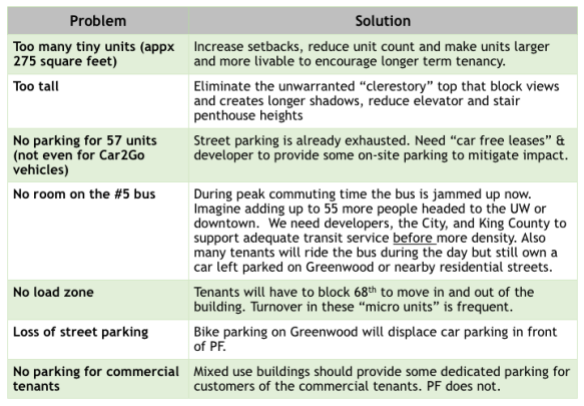1. Mayor Jenny Durkan’s legal counsel, Ian Warner, has left the mayor’s office for a job as public policy director at Zillow, the mayor’s office confirms. His replacement, who started Monday, is Michelle Chen, most recently a deputy city attorney who worked on land use. With Warner out, the mayor’s office retains just two high-level staffers from the Ed Murray era—legislative affairs director Anthony Auriemma and deputy mayor Mike Fong.
2. Speaking of departures: Moxie Media, the political consulting firm that ran Cary Moon’s unsuccessful (and costly) campaign for mayor in 2017, just lost four of its key staffers, including two veteran local political consultants who are striking (back) out on their own: John Wyble, whose firm, Winpower Strategies, merged with Moxie almost exactly one year ago, and Heather Weiner, who has been with the firm since 2016. Wyble was a partner at Moxie for most of the 2000s; when he rejoined the firm, which was founded by Lisa MacLean, last year, I wrote that “A look at Winpower’s local electoral record suggests this is not a merger of two equal partners—as does the fact that the firm will retain the Moxie name.” Wyble’s clients have included include two-time city council candidate Jon Grant and former mayor Mike McGinn, and numerous campaigns for Democratic state legislators, who run in even years. Weiner previously did work for Honest Elections Seattle (the pro-public campaign financing campaign) and several union-backed statewide campaigns.
Asked about the mass departure, both Weiner and Wyble gave versions of the same response: Campaigns are cyclical, it was time to make a change, consulting firms sometimes split up and sometimes come back together. “For me personally, I ran my own company, and I liked that better. That’s what I learned this year,” Wyble said. Weiner put it this way: “Political firms are kind of like boy bands, where they break up and get back together. It makes more sense for me to [go into the slow 2019 campaign season] as an independent consultant.”
Other possible reasons for the breakup: Personality conflicts (MacLean: “I’m not going to get into all of that in this conversation”), or financial difficulties, which MacLean denies. In fact, MacLean said Moxie had “an incredible cycle,” financially speaking, in 2018—”probably our biggest ever”—and explained the split as “typical end-of-cycle, shuffling the deck, musical chairs kind of stuff—people moving on.” The departures—which also include account executive Maria Leininger, who is going to work for Congresswoman-elect Kim Schrier, and Delana Jones, another partner at the firm—will leave Moxie at about half the size it was during the 2017 and 2018 campaigns.
3. The city council will reportedly get its first look at the bids for the Mercer Megablock redevelopment in executive session on Monday morning, with the possibility for some public discussion before the closed-door meeting. The three-acre site is the largest remaining piece of city-owned land in South Lake Union; the city put it on the market earlier this year, in a request for proposals (RFP) that asks potential buyers to include at least 175 rent-restricted apartments in their bid. Affordable housing advocates have suggested that the city hang on to the property and build affordable housing on the site. On the open market, the combined megablock property is likely worth in the range of $90 million; but because the land was purchased, in part, with gas and commercial parking taxes, more than half of the proceeds of any sale or long-term lease will, under state law, have to go to the city’s transportation department.
4. Move All Seattle Sustainably, a new coalition made up of transit, bike, and pedestrian advocates—including the Cascade Bicycle Club, Seattle Neighborhood Greenways, and the Transit Riders Union—is demanding that Mayor Jenny Durkan take concrete actions before the end of 2018 to prioritize transit, biking, and walking during the upcoming “period of maximum constraint,” when construction projects and the closure of the Alaskan Way Viaduct are expected to create gridlock downtown. The coalition’s list of priorities includes completing the stalled Basic Bike Network downtown; implementing transit speed and reliability improvements (like bus bulbs, longer hours for bus-only lanes, and queue jumps) on 20 transit corridors across the city; and keeping sidewalks open for pedestrians during construction.
In recent weeks, advocates have expressed concern that Mayor Jenny Durkan’s office is shutting members of Cascade and Seattle Neighborhood Greenways out of positions on advisory groups like the Seattle Bike Advisory board, whose former chair, Cascade board member Casey Gifford, was abruptly replaced by Durkan last month. The mayor’s office denies this (in an email to a group of advocates late last month, deputy mayor Shefali Ranganathan said there was “no truth” to the rumor and asked for help in “quashing” it) and notes that Cascade director Richard Smith was on the committee that is helping to select the new Seattle Department of Transportation director. In any case, it’s clear that the transit, bike, and environmental activists on the coalition don’t see eye to eye with the mayor’s office on transportation. On the new MASS website, the group declares the city “off track” and unprepared not only for the upcoming traffic crunch, but “to achieve Vision Zero”—the goal of reducing the number of deaths and serious injuries from traffic violence to zero— “or even Seattle’s insufficient Climate Action Plan.”





